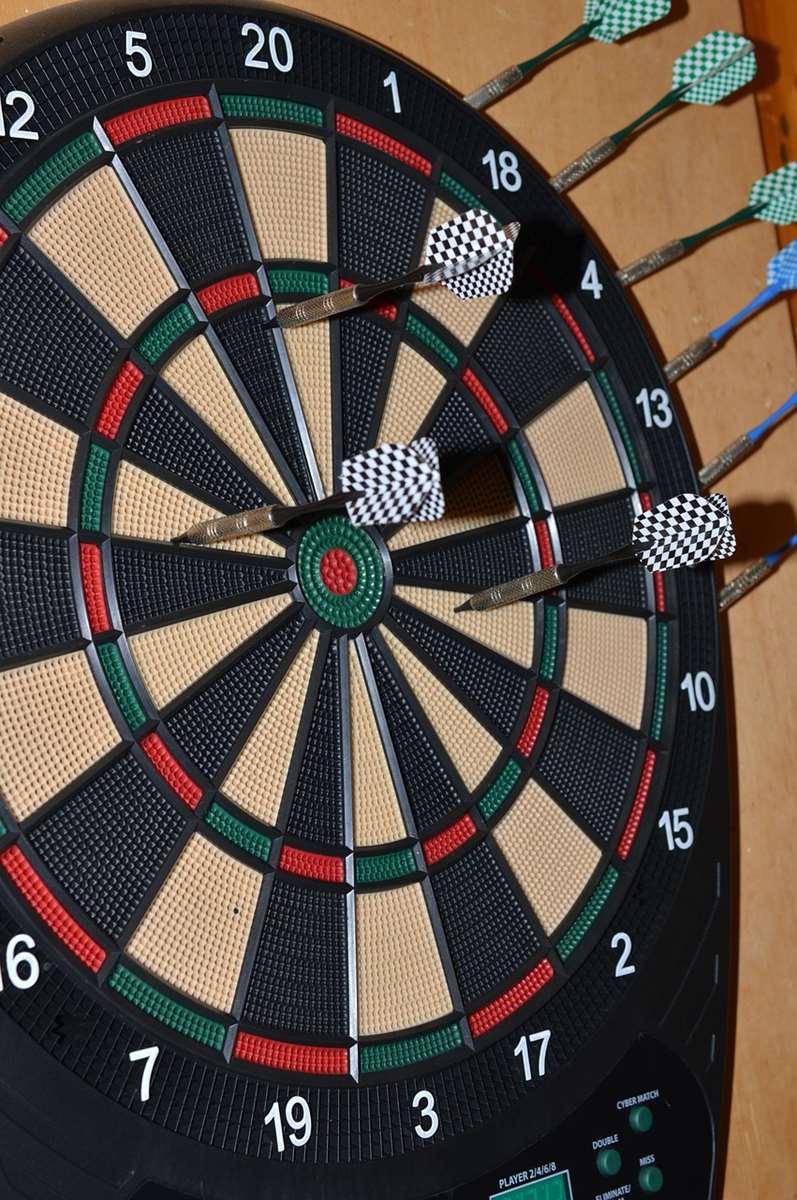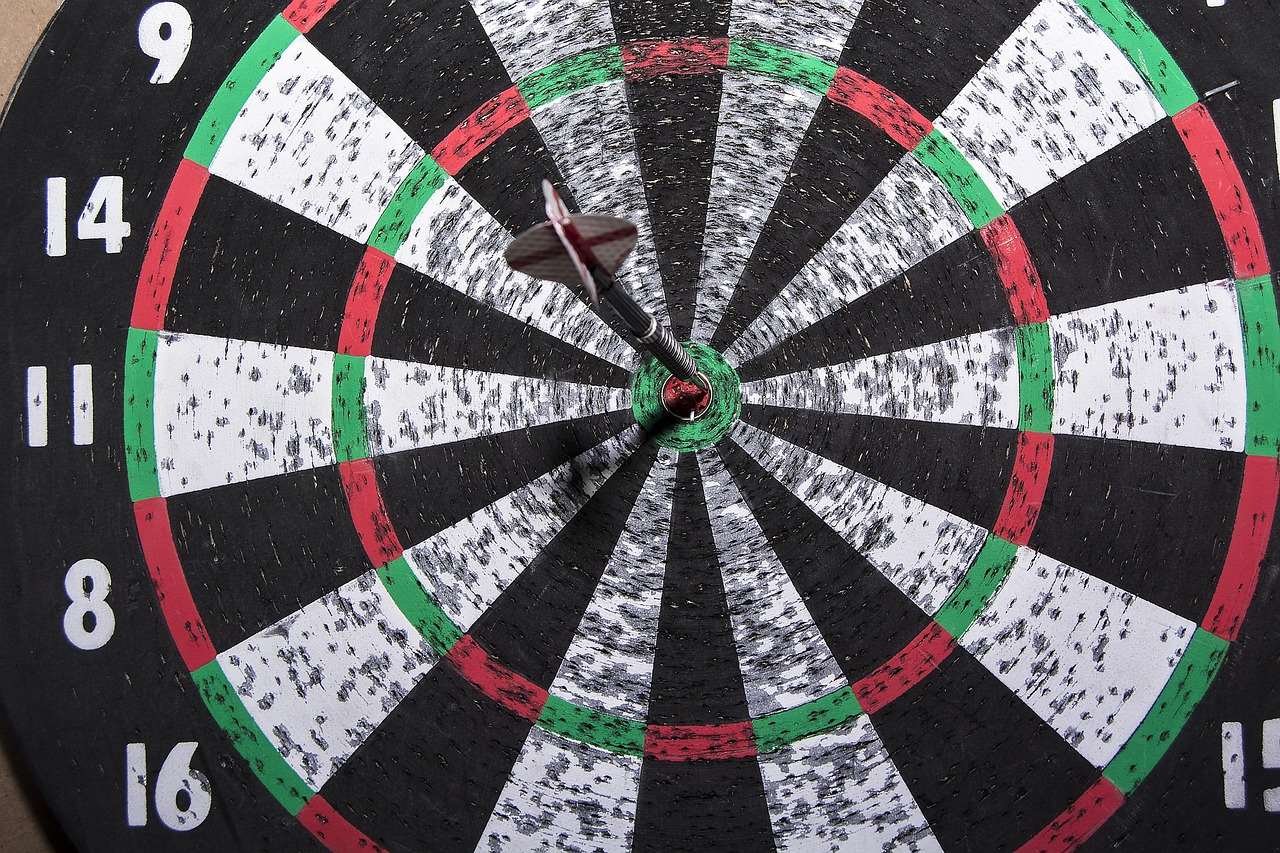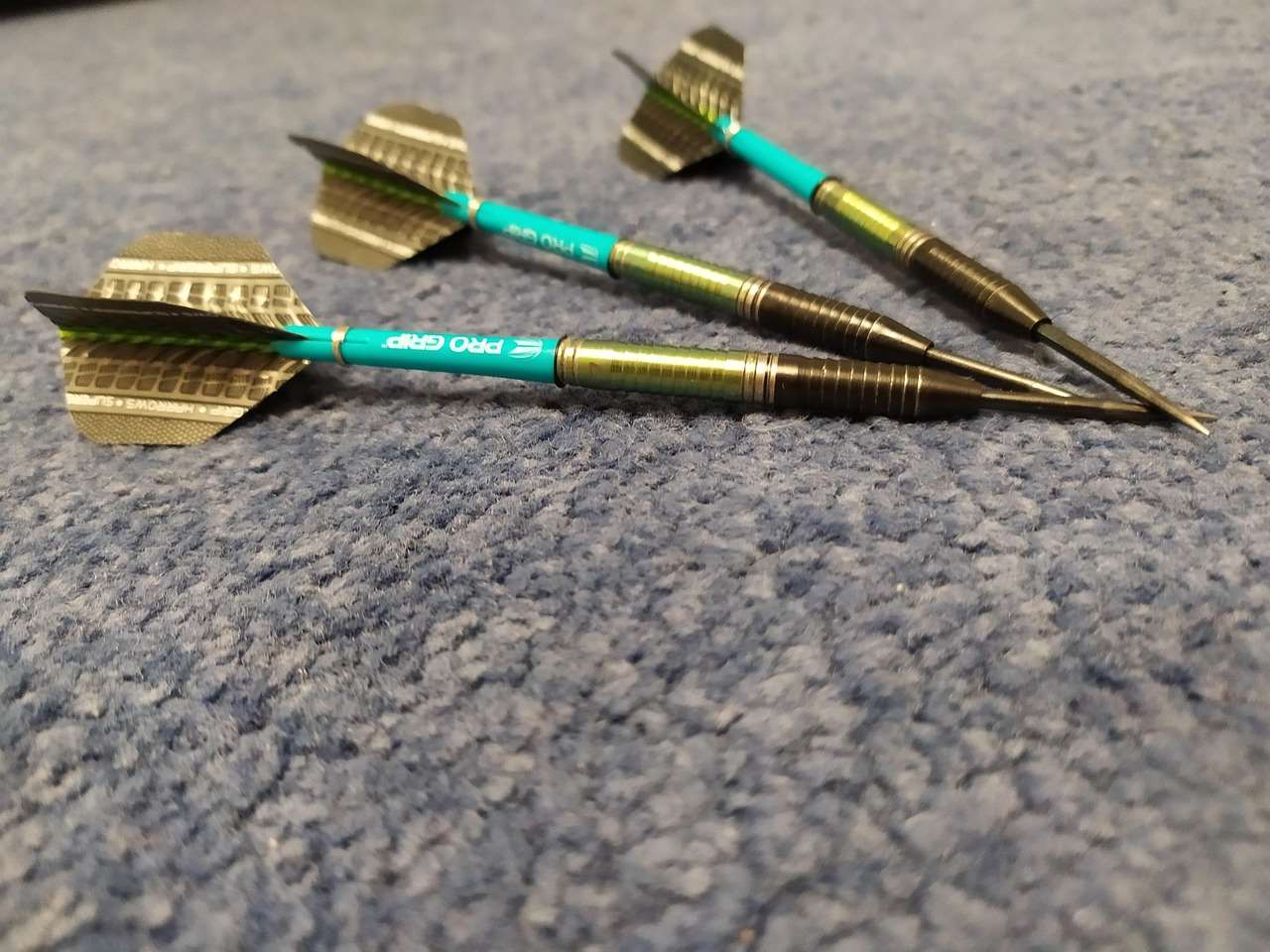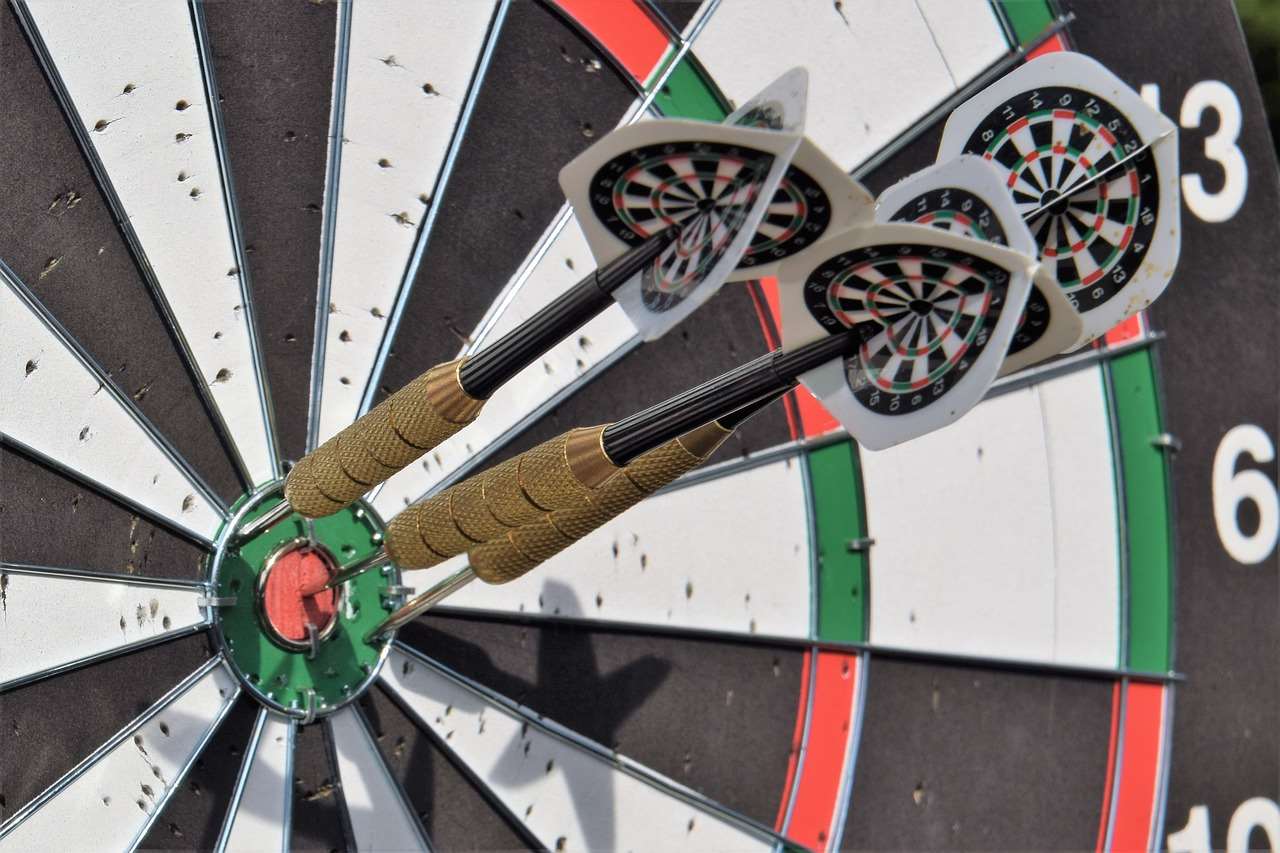Mastering basic darts fundamentals for beginners is the key to enjoying and improving at this classic game. This article breaks down the core elements of darts, from stance and grip to aiming and follow-through, giving you a solid foundation for throwing like a pro.
⚠️ Still Using Pen & Paper (or a Chalkboard)?! ⚠️
Step into the future! The Dart Counter App handles all the scoring, suggests checkouts, and tracks your stats automatically. It's easier than you think!
Try the Smart Dart Counter App FREE!Ready for an upgrade? Click above!
Understanding the Basic Darts Fundamentals for Beginners
Darts, while seemingly simple, requires a good understanding of the fundamentals to consistently hit your target. This involves everything from the equipment you use to the mental approach you take to the game. Don’t get discouraged if you don’t see results immediately; practice and patience are key.

Choosing the Right Darts
The first step in mastering basic darts fundamentals is selecting the right darts. Consider these factors:
- Weight: Darts typically range from 16 to 30 grams. Beginners often find darts in the 22-24 gram range to be a good starting point.
- Barrel: The barrel’s shape affects your grip and release. Common shapes include torpedo, straight, and bomb. Experiment to see what feels most comfortable.
- Shafts: Shafts connect the barrel to the flight. They come in various lengths and materials (nylon, aluminum, carbon fiber). Longer shafts provide more stability but may require more control.
- Flights: Flights affect the dart’s trajectory and stability in the air. Different shapes (standard, kite, slim) offer varying levels of lift and drag. Adapting darts rules for small spaces: tips and tricks can also influence your dart selection.
Setting Up Your Dartboard
Proper dartboard setup is crucial for fair play and consistent practice. Follow these guidelines:
- Height: The center of the bullseye should be 5 feet 8 inches (1.73 meters) from the floor.
- Distance: The throwing line (oche) should be 7 feet 9.25 inches (2.37 meters) from the face of the dartboard.
- Lighting: Ensure adequate and even lighting on the dartboard to avoid shadows and improve visibility.
Mastering Your Stance, Grip, and Posture
These three elements form the foundation of a consistent throw. Let’s delve into each:
Finding Your Ideal Stance
Your stance provides the base for your throwing motion. Here are some common stances:
- Square Stance: Facing the dartboard directly with both feet. This stance provides good balance but may limit your throwing arm’s range of motion.
- Open Stance: Angling your body slightly to the side (usually with your throwing-side foot forward). This stance allows for a more natural throwing motion and better visibility of the target.
- Closed Stance: Angling your body even more to the side, almost perpendicular to the dartboard. This stance maximizes throwing arm range but may compromise balance.
Experiment with different stances to find one that feels comfortable and stable. Most players prefer a slightly open stance.
Developing a Consistent Grip
Your grip is how you connect with the dart. Consistency is key here. Here are some common grip styles:
- Two-Finger Grip: Holding the dart with your thumb and index finger, with minimal support from other fingers. This grip allows for a delicate touch but may require more control.
- Three-Finger Grip: Adding your middle finger for extra support and control. This is a popular grip for beginners.
- Four-Finger Grip: Using all four fingers for maximum control and stability. This grip may limit your throwing motion’s fluidity.
Avoid gripping the dart too tightly, as this can cause tension and affect your accuracy. Aim for a relaxed, natural grip.

Maintaining Proper Posture
Good posture promotes balance and allows for a smooth throwing motion. Keep these points in mind:
- Head Position: Keep your head still and focused on the target.
- Shoulder Alignment: Keep your shoulders relaxed and aligned with the target.
- Body Stability: Avoid swaying or moving your body during the throw. Maintain a stable base.
The Art of Aiming: Mastering Target Acquisition
Accurate aiming is vital. Here’s how to refine your targeting technique as part of learning basic darts fundamentals for beginners.
Visualizing Your Target
Before each throw, take a moment to visualize the dart hitting the target. Focus on the specific area you want to hit, whether it’s the bullseye, a double, or a treble. A clear mental image can significantly improve your accuracy.
Using Your Eye as a Guide
Keep your eye focused on the target throughout the entire throwing motion. Avoid looking at your hand or the dart. Your eye should act as a guide, leading your arm and hand towards the desired location.

Adjusting for Wind and Other Factors
External factors, such as wind or uneven flooring, can affect your dart’s trajectory. Be aware of these factors and make small adjustments to your aim accordingly. This is especially relevant when practicing outdoors or in less-than-ideal conditions. Remember you can also find creative dart rules for parties and social gatherings which often require adapting to the environment.
Developing a Smooth and Consistent Throwing Motion
A fluid throwing motion is essential for accuracy and repeatability.
The Backswing
The backswing is the preparation phase of your throw. Pull the dart back smoothly and deliberately, keeping your elbow raised and your wrist firm. Avoid jerking or rushing the backswing.
The Forward Swing
The forward swing is where you generate the power and accuracy of your throw. Extend your arm smoothly towards the target, releasing the dart just before your arm reaches full extension. Keep your wrist firm and avoid snapping it. This smooth transition allows for an effective throw following all of the basic darts fundamentals.
The Follow-Through
The follow-through is the continuation of your throwing motion after you release the dart. Continue extending your arm towards the target, maintaining your focus and balance. A good follow-through indicates a smooth and controlled release.

Practice Drills for Throwing Consistency
- Target Practice: Focus on hitting specific targets, such as the bullseye or a particular number segment.
- Repetition Drills: Throw multiple darts at the same target to develop muscle memory and consistency.
- Blindfolded Practice: Throw darts with your eyes closed (carefully!) to improve your feel for the throwing motion.
Understanding Scoring and Strategy
Knowing how to score and strategize can significantly improve your game.
Basic Scoring Rules
Familiarize yourself with the basic scoring rules of darts, including the values of the different segments on the dartboard (single, double, treble) and the common game formats (301, 501, Cricket). Knowing these rules is another basic darts fundamental.
Strategic Target Selection
Choose your targets strategically based on your current score and the game format. For example, in 501, aim for high-scoring segments (such as the treble 20) to reduce your score quickly. When finishing, target doubles to end the game.
The Importance of “Checkout” Numbers
Learn common “checkout” numbers (the scores you need to finish the game with a double) and practice hitting those doubles consistently. This is a crucial skill for winning games.
Mental Game and Practice Tips
Darts is as much a mental game as it is a physical one. Implementing the basic darts fundamentals correctly requires a strong mindset.
Developing a Positive Mindset
Stay positive and avoid getting discouraged by bad throws. Remember that everyone misses sometimes, and the key is to learn from your mistakes and move on. Self-belief and confidence can make a big difference in your performance.

Effective Practice Techniques
- Regular Practice: Dedicate time to practice regularly, even if it’s just for a few minutes each day. Consistency is key.
- Focused Practice: Concentrate on specific areas of your game during practice, such as aiming, throwing motion, or checkout routines.
- Vary Your Practice: Don’t just throw at the bullseye all the time. Mix up your practice by targeting different segments and playing different game formats. Also, check out this link for Rule modifications to make dart practice fun and effective.
Managing Pressure and Nerves
Learn to manage pressure and nerves, especially during competitive games. Take deep breaths, focus on your breathing, and remind yourself of your practice and preparation. The Dart Counter App can be a valuable tool for tracking your progress and simulating game situations.
Advanced Techniques and Tips
Once you’ve mastered the basics, you can explore some advanced techniques to further improve your game:
- Grouping: Focus on grouping your darts close together, even if you don’t hit the exact target you were aiming for. Consistent grouping indicates a solid throwing motion.
- Double Out Accuracy: This is crucial for closing out games.
- Mental Toughness: Develop strategies for dealing with pressure, setbacks, and distractions. This includes maintaining focus, managing emotions, and staying positive.
Remember that improvement takes time and effort. Be patient, persistent, and enjoy the process of learning and growing as a darts player. It is also important to check out Adapting darts rules for beginners.
Conclusion
Understanding and applying these basic darts fundamentals for beginners is the first step to becoming a proficient darts player. From selecting the right equipment and mastering your stance to refining your aiming and developing a smooth throwing motion, each element contributes to your overall performance. Remember to practice regularly, stay positive, and enjoy the game! Now, grab your darts and start practicing these techniques to improve your accuracy and consistency on the dartboard.
Hi, I’m Dieter, and I created Dartcounter (Dartcounterapp.com). My motivation wasn’t being a darts expert – quite the opposite! When I first started playing, I loved the game but found keeping accurate scores and tracking stats difficult and distracting.
I figured I couldn’t be the only one struggling with this. So, I decided to build a solution: an easy-to-use application that everyone, no matter their experience level, could use to manage scoring effortlessly.
My goal for Dartcounter was simple: let the app handle the numbers – the scoring, the averages, the stats, even checkout suggestions – so players could focus purely on their throw and enjoying the game. It began as a way to solve my own beginner’s problem, and I’m thrilled it has grown into a helpful tool for the wider darts community.